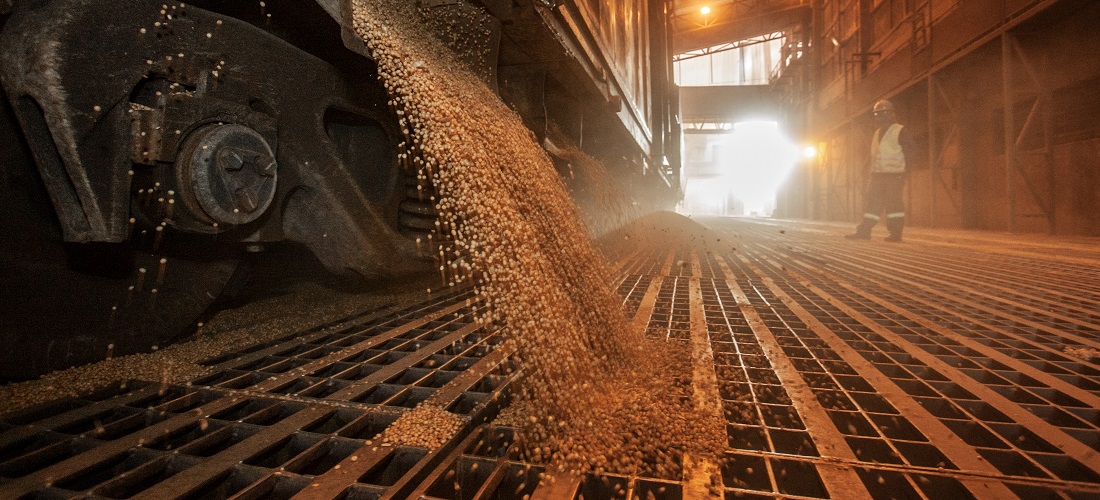
Grain market dynamics go back to “old normal” after two years of war
Feb, 23, 2024 Posted by Gabriel MalheirosWeek 202408
Two years after the onset of the war between Russia and Ukraine, which nearly collapsed the global grain market, we now see a steady supply of these products. This market configuration signals that, despite the ongoing conflict that started on February 24, 2022, the world is unlikely to face shortages of these commodities, analysts say.
Wheat, Russia’s main crop, reached a record high of $12.94 per bushel on the Chicago Board of Trade after the war began. However, it has lost momentum since then.
Alef Dias, grains and macroeconomics analyst at Hedgepoint Global Markets says several factors have led to the development of the current scenario, including Russia’s increasing supply, the world’s top wheat producer.
“Since the 2021/22 crop season, Russia has been producing over 90 million tonnes of wheat, and projections for 2024/25 [currently in the planting phase] indicate a volume of nearly 94 million tonnes. During this same period, the country has also increased exports and is expected to supply the market with 50 million tonnes in the current cycle [2023/24],” he says.
The second factor is the performance of the wheat crop in Ukraine. The area allocated to wheat increased from 7.4 million hectares (the last season before the war began) to 5.1 million hectares in 2023/24. Despite a decrease in acreage, yields broke the record in this cycle, reaching 4.6 tonnes per hectare, well above the 3.8 tonnes per hectare from the previous crop season.
“The Ukrainians managed to increase their productivity, even with fewer fertilizers, as the weather was extremely favorable for crops,” says Alef Dias.
Another reason for the price drop was that Ukraine continues to be active in exports, even after Russia quit, in July 2023, the agreement that guaranteed grain shipments through the ports of the Black Sea. Shipments still occur through the port of Odessa, in the Black Sea, but a substantial part of the wheat and other grains have been exported via ports on the Danube River, the analyst says.
“Under the agreement, there were significant delays in inspections of Ukrainian ships by Russian authorities. After the end of the pact, Ukrainian exports through the Black Sea have been expedited,” he notes.
Consultancy data shows that the flow has increased since the agreement ended. In the third quarter of 2023, the last with shipments under the agreement, 268 ships loaded with wheat left Ukrainian ports via the Black Sea. In the fourth quarter, the number of vessels rose to 373.
Given the improved conditions for exports, the United States Department of Agriculture (USDA) raised its projection for Ukrainian wheat exports in 2023/24 to 15 million tons, a 7.1% increase from the January estimate.
Corn
In the case of corn, the war had the effect of exacerbating the scenario of tight supply and high prices that prevailed in 2022. With the conflict in Ukraine, the world’s fourth-largest corn exporter, the cereal reached $8.13 per bushel in Chicago.
“At the time, we had inflationary pressure, which had been ongoing since the COVID-19 pandemic. This culminated in the failure of the second corn crop in Brazil in 2021/22,” recalls João Pedro Lopes, market intelligence analyst at StoneX.
However, from 2022 until now, the corn supply scenario has changed. This is mainly due to the increase in American corn output, expected to reach 389.69 million tonnes. Additionally, there has been a recovery in the Argentine harvest.
“The logistical problems for Ukrainian exports have not been 100% resolved, but they have been mitigated. All that uncertainty and difficulty regarding the country’s exports are no longer a reality,” says Lopes.
The USDA estimated this month that Ukrainian corn exports are expected to total 23 million tonnes in the 2023/24 crop season, an increase of 2 million from the January projection.
Fertilizers
The fertilizer market has also returned to a certain degree of normalcy two years after the conflict began. When the war broke out, prices rose by 200%, according to StoneX. In addition to Russia being a major producer of these inputs, the conflict left an impact on the flow to markets like Brazil that depend on them.
According to StoneX, in 2021, the price of potassium chloride was trading below $300 per ton but reached a peak of $1,200 between March and May 2022. Before the war, urea was also quoted below $300 per ton, but in March 2022, it surpassed $1,000 per ton.
Marcelo Melo, fertilizer coordinator at StoneX, notes that the price level of NPK in the early months of the conflict reached the highest level since 2008. The increase was felt by producers, who had been trying to mitigate the rising cost of fertilizer since 2020 due to the pandemic, which affected supply chains.
With the surge in prices, there was a “destruction of demand,” according to analysts. Except for India and China, fertilizer consumption dropped, contributing to the price drop. In addition to the initial decrease in demand, the normalization of supply in 2023 also brought prices back to levels seen before the start of the war.
Source: Globo Rural
Click here to read the original article: https://globorural.globo.com/cotacoes/noticia/2024/02/mercado-de-graos-vive-velho-normal-apos-dois-anos-de-guerra.ghtml
-
Other Cargo
Nov, 10, 2022
0
Stone exporters target Chinese market after record exports
-
Ports and Terminals
Oct, 17, 2023
0
Maranhão-based Itaqui Port sees 6% surge in Jan-Sep cargo throughput
-
Fish
Mar, 07, 2024
0
South Africa greenlights imports of Brazilian fish
-
Grains
Sep, 14, 2022
0
Argentina farmers sell 15% of total soy crop in a week, Rosario Exchange says


